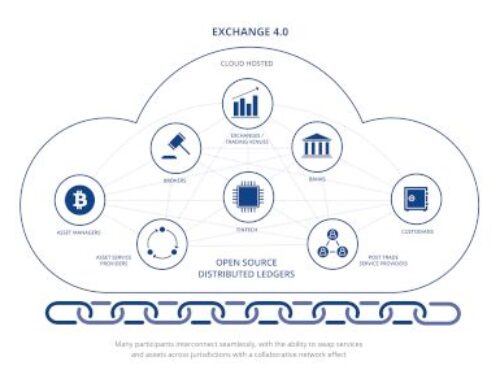By Hirander Misra, Chairman and CEO, GMEX Group & MINDEX Holdings
Recently, regulators across the globe have issued guidelines on Security Token Offerings (STOs). Hirander Misra explains what STOs are, why are they so important and how this multi-trillion-dollar opportunity can win the trust of a wider range of investors.
What are STOs?
An STO is the process of raising finance by selling issued security tokens to investors. A security token is a cryptographic token backed by the shares of a company. The shares are held on escrow against a pledge agreement and security token holders are entitled to the same privileges as traditional shareholders, including dividends and voting rights.
The security token’s presence on a blockchain gives it many more features than a stock certificate. Smart contract systems can incorporate regulations within the token itself. Know-Your-Customer rules can prevent unqualified investors from buying the token.
Are STOs really gaining traction globally?
According to Bloomberg, the STO is “set to take centre stage in 2019”. In March 2019, Cisco published a report predicting that 10% of global GDP will be stored on the blockchain by 2027.
Deloitte tweeted in May 2017 that 10% of global GDP will be on the blockchain even earlier, by 2025, and token network Polymath in April 2018 predicted the growth of the STO market to USD 10 trillion by 2020.
What opportunities do STOs provide for investors?
Given the vast potential of the STO market, it is good to consider why such a stellar rise is predicted.
I believe that there are a number of key factors that will power this ecosystem, including:
- Use of Blockchain: With an exchange built on blockchain, all trades will be transparent, with traceable ownership.
- Fewer intermediaries: A digital market, enabling security tokens and cryptocurrencies to be traded, brings issuers and traders directly together, with potentially lower costs and higher liquidity.
- Real-time settlement: Digital markets can operate 24/7 and offer real-time settlement, eliminating huge inefficiencies of daily market closures.
- Programmable: Digital assets are programmable and can include smart contracts such as corporate events like ex-dividend and cum-dividend dates and proxy voting.
- Custody services: Exchanges will offer custody services for cryptocurrencies, security tokens and other digital assets.
Why does an STO deliver a “trusted environment” for investors?
From the above, it is clear that STOs can deliver greater liquidity, reduced transaction costs, smoother issuance, and flexibility to buy, sell, borrow and lend assets.
Key factors of this trusted environment and the opportunities it offers are:
- Increased tradability: Liquidity makes the asset more accessible. It is faster to trade and settle, enabled by a 24/7 trading environment in a global market, and provides the option to list on secondary exchanges set up to offer digital asset trading. Thus, companies will be able to conduct a fundraising with STOs and their tokens can be tradable in the secondary market;
- Lower costs: A typical Initial Public Offering (IPO) on a leading exchange is likely to be much more expensive than a high quality STO when factoring in all costs, including professional service fees;
- Institutional acceptance: The market is becoming more institutional e.g. Swiss Digital Exchange by SIX Group in Switzerland, ICE’s Bakkt in the USA, MINDEX Marketplace in Mauritius and announcements by the likes of Fidelity, Standard Chartered Bank and others;
- Instant settlement: STOs are light, agile and inexpensive and allow for instant settlement, with institutional-grade third-party custody services starting to emerge;
- Asset swapping: In the future, digital exchanges will offer access to every type of security. This will allow for exchange of historical asset classes for new esoteric ones – e.g. World of Warcraft tokens for Rolls Royce shares through the use of smart contracts;
- New products: Hybrid STO/ tokenised Equity Exchange Traded Funds (ETFs) will emerge, backed by an asset pool to ensure diversification with individual direct investment into these assets also being possible. To create asset packages with different STOs, think of it as an ETF backed by assets, where you create a Net Asset Value (NAV) on the fund predicated on the underlying asset value;
- Virtual trading of immobile assets: STOs will be collateralised through digital and crypto exchanges and immobile or illiquid assets will become virtually traded; and
- Digital futures and options: Futures and options will be determined by smart contracts – e.g. if a predictable event happens, sell Ethereum (a popular cryptocurrency) at USD 150!
Can STOs realise their potential?
Given the surge in STOs, numerous jurisdictions are preparing a legislative and regulatory framework for digital assets.
For instance, in Hong Kong, STOs will fall under existing securities laws with security tokens likely to be designated as securities under Hong Kong’s Securities and Futures Ordinance. Similarly, in Mauritius, the Financial Services Commission (FSC) has declared that security tokens are considered digitally represented securities as defined in the Securities Act of 2005.
In July 2019, the European Union Prospectus Regulation will officially come into effect. The new law will be hugely important for the STO sector since it outlines clear disclosure requirements for issuing and trading these tokens applicable across all member states. This includes Malta, which has been making more progress with legislation in this space, ahead of the EU-wide rules coming into force.
Needless to say, these initiatives, together with others such as those in the likes of Switzerland, Singapore as well as potential developments in the United States and United Kingdom, are expected to go a long way towards reinforcing the increasingly credible status of STOs within well-regulated environments.
What does the future hold?
Changes in the world over the past few decades have warranted a change in how digital assets are defined. Ten years ago, digital assets stood for images and documents, but now potentially represent entire financial systems and information oceans. Individuals and institutions therefore need trusted solutions and the market is starting to respond to this.
One thing is clear, we are only at the start of the 4th industrial revolution. The road to discovery and innovation lies ahead of us to create positive change and democratise the way that we do things.


